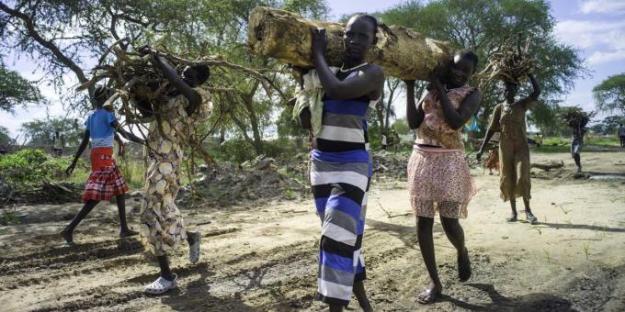
The author in happier times in South Sudan circa 2005/2006
Published in 2016, its time to reshare this Classic Cassandra post.
In 2012, I took a Hostile Environment Awareness Training (HEAT) course before I went to Libya with the British government for the Preventing Sexual Violence Initiative. I was really nervous as in mid 2011, there had been an attack on the hotel where I had been working in Kabul, Afghanistan days after I left and I realized I had never felt safe in that country and didn’t trust UNDSS to ensure my safety. I was most nervous about how I would react to the “fake kidnapping” part of the training- and as it turns out – I was fine, but one of my colleagues was not. She was a survivor and experienced a flashback during this section of the training. Our mostly male trainers had no psychologist on standby and were not prepared to support her so I was called in to help despite not having the relevant training or credentials.
This all came rushing back to me a few days ago when the AP report about the attacks on the Terrain House in Juba, Sudan and the rape of expatriate aid workers hit the news. The rage and sadness I felt about the UN’s refusal to deploy peacekeepers to protect these civilians threw me into a sad dark place. I then learned that the US Embassy (MY EMBASSY!) had also failed to protect these American citizens and had “made some phone calls.” Eventually the Government of Sudan sent in someone to rescue the people but the local staff of the hotel and 3 women were left behind to be rescued the next day by a private security force.
What must it have felt like to be the women “left behind”? And I couldn’t stop myself from immediately imagining myself as one of the three expatriate women left overnight with the rapist soldiers waiting to be rescued the next morning. I had to stop myself to save my sanity.
The most frustrating part for me is the false sense of security that being nearby the peacekeepers provided these aid workers. I am furious at the security officers who re-assured the people in the house that they would be fine. From the article: “One of the women gang-raped said security advisers from an aid organization living in the compound told residents repeatedly that they were safe because foreigners would not be targeted. She said: “This sentence, ‘We are not targeted,’ I heard half an hour before they assaulted us.”
Too often, our “security professionals” ignore women’s needs or have REALLY outdated viewpoints on how women can protect themselves. In Bangkok, at the recent women’s day- UNDSS told women that they should “smile more” to protect themselves and in Jordan, the UNHCR security personnel who was giving me a brief there said I should “dress decently” (to which I responded, since I’m a decent person anything I wear is, by definition, decent). Aid workers everywhere are deeply shaken by this event and what it shows about the lack of effective safety and security systems in the field.
Our so-called safety systems are not always going to be there. It’s obvious that we, as women, are often alone out there, and as every woman in the world has learned, in a world where rape culture is the norm and women are devalued, you have to take responsibility for your own safety and security.
August 19 is World Humanitarian Day where we remember our colleagues who were killed in the line of duty. Today, and every day, we should be thinking about the particular vulnerability to rape that women aid workers face in the line of duty. Female aid workers everywhere are particularly deeply shaken by this event. Some are privately expressing how afraid they feel but that they feel worse for abandoning South Sudanese women who bear the brunt of the sexual violence. Will it be worse for them if we leave?
I’m too angry and sad to write a more professional polished piece – so I give you instead, a piece that I wrote about this in 2012.
Gender-based Violence and Security
This blog post was published by USAID to coincide with the 16 Days of Activism against Gender-based Violence event, “Who Takes Care of the Caregivers? Providing Care and Safety for Staff in Gender-based Violence Settings,” taking place on Thursday, Nov. 29th 2012 in Washington DC, hosted by the Inter-Agency Gender Working Group, funded by USAID. It is no longer available online but a copy of it can be found here. Tips for female travelers that I wrote can be found here.
Gender-based Violence (GBV) is an issue that impacts aid workers – not just beneficiaries and not just staff that works in GBV settings. This post examines agencies’ duty to care for their workers by preventing and responding to GBV.
“Keeping International Workers Safe: Preventing and Responding to Gender-based Violence”
Sarah Martin, Consultant and Specialist on Prevention and Response to Gender-based Violence
The sexual assault of the journalists Lara Logan, Mona Eltahawy and two unnamed British and French journalists in Egypt shocked the world and brought the issue of gender-based violence (GBV) against Westerners working in conflict areas to the forefront. Clearly GBV does not only affect the “locals” in these areas. Not only are journalists at risk but also aid workers–and not just in conflict settings or in GBV program areas.
I recently interviewed a large cross section of women travelers who work in a number of fields (including international development, human rights, humanitarian action and international business) about their experiences as women while traveling and working overseas*. Many of them brought up their frustration that sexual harassment and sexual assault were never raised in security trainings and that agencies refused to address this as a real security concern. Increasingly, aid agencies are providing more “realistic” security trainings that simulate “hostile environments to prepare their employees for gunfire, kidnappings and other events in the field.” While some of these trainings talk about sexual assault, there are no discussions of how to prevent sexual assault or how to react or support colleagues if they are assaulted. Sexual harassment in the workplace as a security issue is often ignored. In addition, the purveyors of these trainings are mostly male and show little awareness to the issue of sexual assault or the gender concerns of female trainees. I recently attended one such training where one of the participants relived her own sexual assault from years ago while undergoing a simulated “kidnapping.” While they took her out of the simulation, there were no psychologists or female trainers available to talk to her.
Female development and aid workers have the same security concerns as their male counterparts: crime and landmine accidents and armed robberies do not discriminate. Security measures, trainings, and manuals are the same for men and women, and most agencies take a ‘gender-blind’ approach to security. Most security officers are men, and many of them come from a military background. This gender-blind approach to security, however, leaves out a major issue. Women also face another security threat that most men do not encounter – gender-based violence, namely sexual harassment and sexual violence.
Rape myths promote the false idea that women are only sexually assaulted by strangers. While this can happen, women are much more likely to be attacked by someone familiar to them – a co-worker, a driver, or a friend. Most of the women I interviewed shared stories about fending off sexual harassment by colleagues or actual cases of sexual assault in the field.
Rarely is their organization prepared to handle these issues. While there has been some action taken on “building safe organizations” – the focus has been preventing sexual exploitation of our beneficiaries by our staff. But there is not sufficient attention paid to sexual harassment of our staff by our staff or adequate support for staff that have been sexually assaulted. There is little information in the security manuals that I have reviewed about what medical care a survivor may need or what rights a sexual assault survivor might have. Nor is there guidance on reporting to local authorities, human resources or guarantees of confidentiality. Responsible employers must be prepared to understand and deal with the fact that their employees might become victims of sexual assault [1] and should be prepared to support them. This means bringing the issue of sexual assault up in security trainings and sensitizing the trainers and security personnel on how to address the issue – but not by restricting women’s access to “dangerous areas” but by making sure female employees are informed of the dangers, provided with information on how to protect themselves, and given sensitive and adequate support by their organizations in case the worst happens.
[1] Global statistics show that 1 out of 3 women has experienced some form of sexual harassment or assault.
* From the chapter I wrote entitled “Sexual Assault: Preventing And Responding As An International Travelers in the book Personal Security: A Guide for International Travelers, by Tanya Spencer, ISBN: 9781466559448 commissioned and published by Taylor and Francis, LLC.


 I was in Jordan as one of the authors of the revised
I was in Jordan as one of the authors of the revised 





























